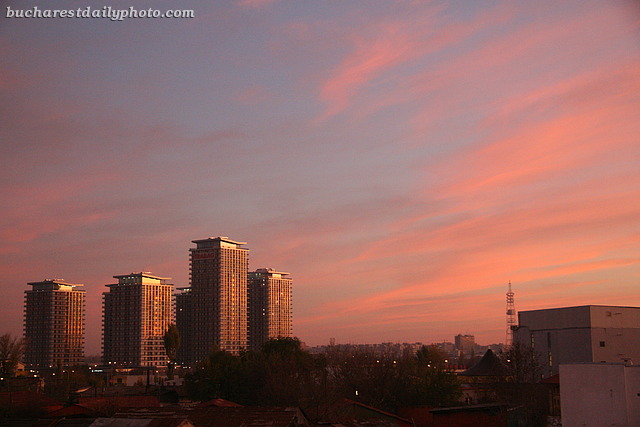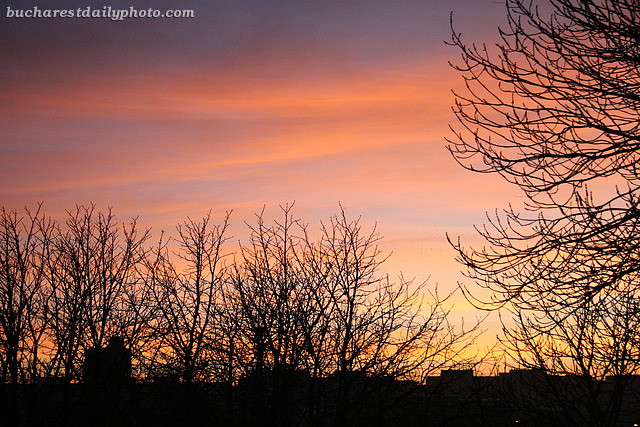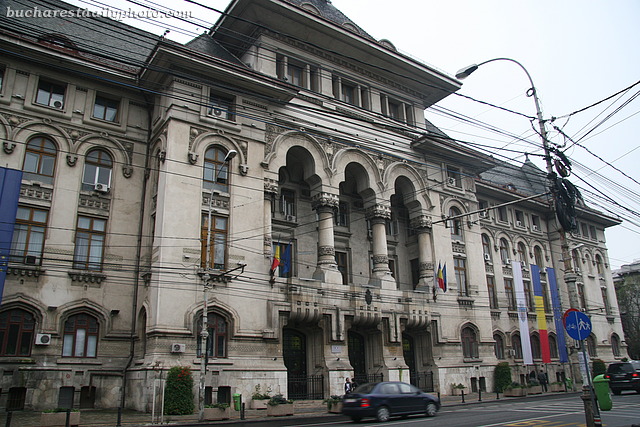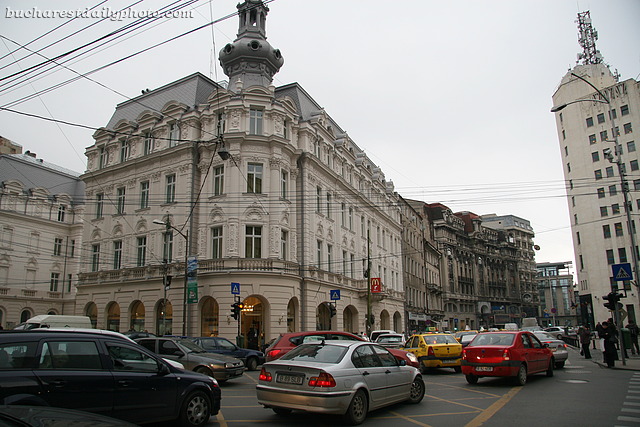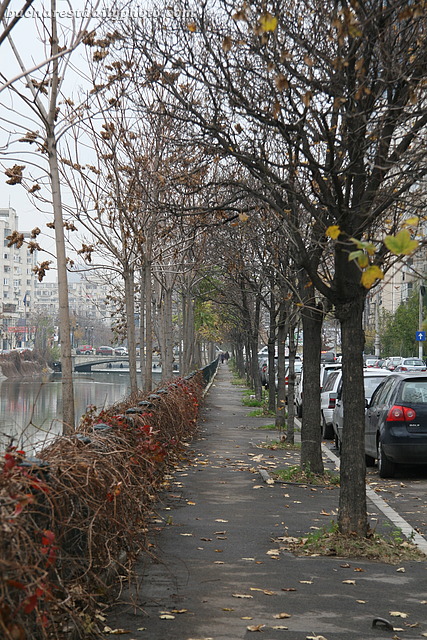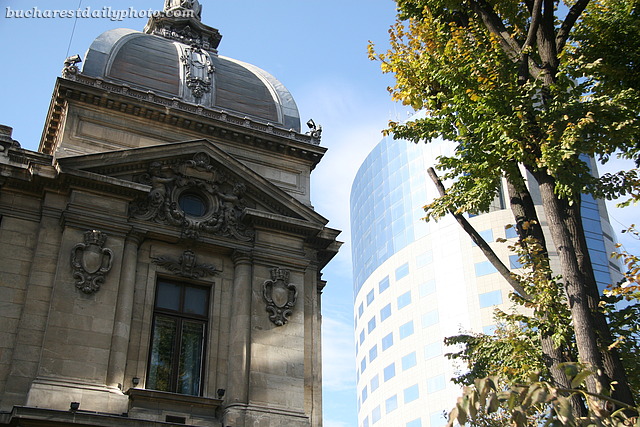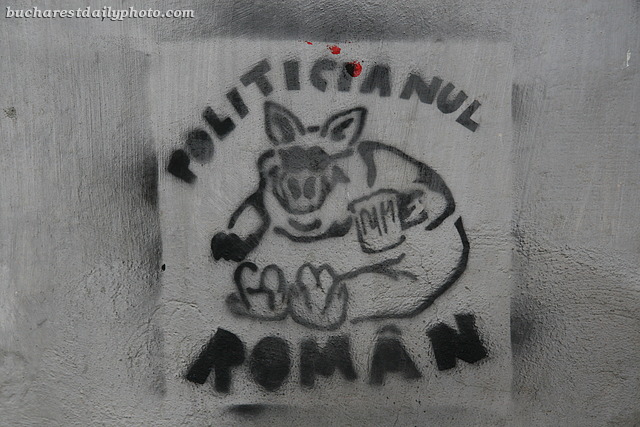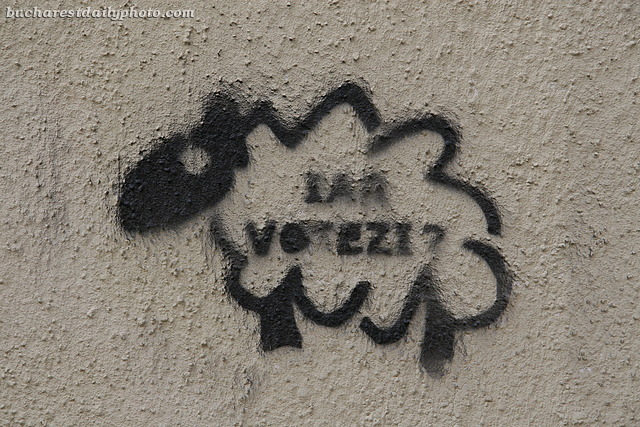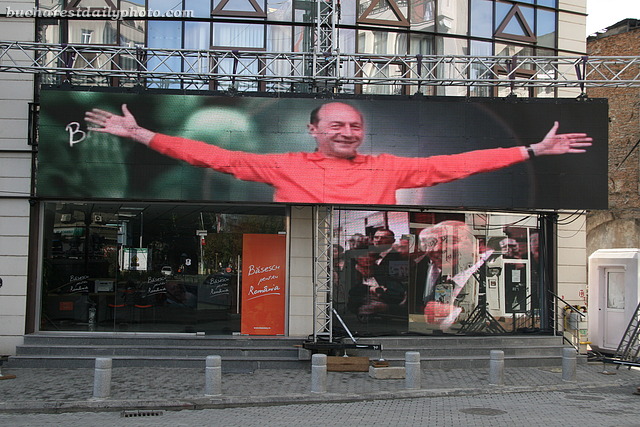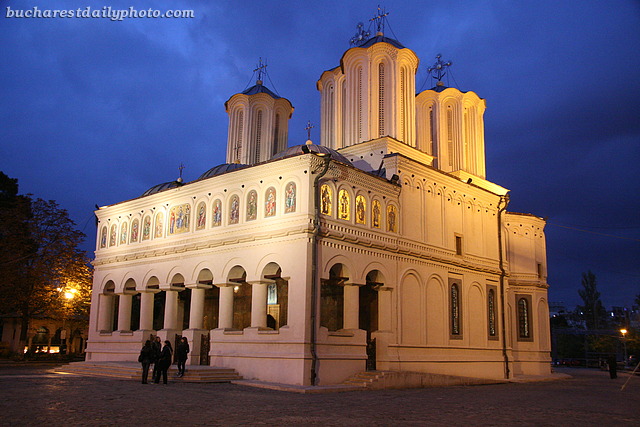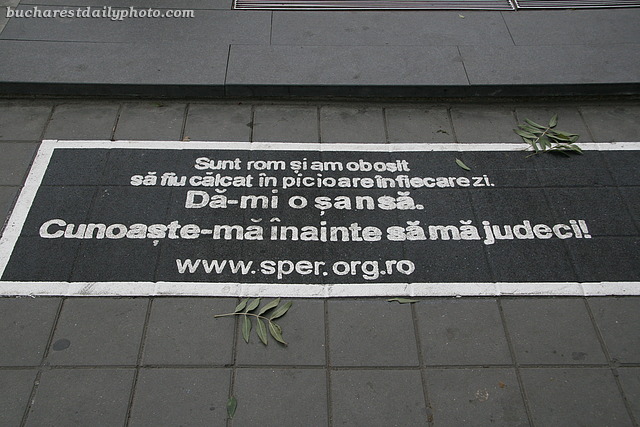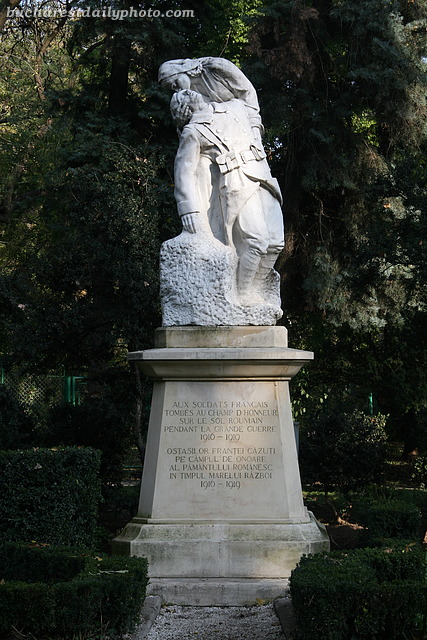Today we finally enjoyed a sunny day, after a week of clouds and fog. It was a good opportunity to shoot new pictures, including this beautiful sunset sky.
Bucharest City Hall is housed in a beautiful building lying across from Cişmigiu Park on Regina Elisabeta boulevard. This is where the good and bad decisions regarding Bucharest are taken. The edifice was built during the years 1906 to 1910 after a design by architect Petre Antonescu and used to house the Ministry of Public Works. The city hall was installed here after WWII when the building, severely damaged by the bombings, was reconstructed and enlarged by Petre Antonescu. This is a fine example of the Neo-Romanian style of architecture, which was very popular in Bucharest at the beginning of the 20th century. The Neo-Romanian was the answer to the attempts of creating a national style in Romanian architecture. It blends together elements from the local peasant architectural tradition with Byzantine and Ottoman elements and late Italian Renaissance themes. If you want to read more about this style, you can find an excellent article here.
The traffic in Bucharest, especially during rush hours, can be a bit on the nightmarish side. I took this photo on Monday. Yesterday, Tuesday, the subway workers went on strike and everyone who normally took the subway to work took the bus or their personal car instead. If you can imagine a sea of cars, all honking (why? since there’s no space to advance to) and just looking like they were parked in the middle of the road, you got the right idea. Many times the traffic of Bucharest looks like that, even when there’s no subway strike.As you can see from the picture, a lot of the mess is brought on themselves by the Bucharest’s drivers who try to inch their way in intersections even when the light is red. The crisscrossed yellow lines that you see on the pavement are supposed the mark the “Do not block” area of the intersection. Not that anyone pays attention to that.
November is not one of my favourite months. I’m not used to the cold yet, the grey skies make me want to sit in bed all day and the frequent raining does nothing to improve the situation. But there are two things that I like about November. The first is the approach of the winter holidays. The second are the fall colors, which can make even a mundane landscape like the one in today’s photo look interesting. I took the photo along Dâmboviţa River between Timpuri Noi and Mărăşeşti.
I’ve talked about the contrast shown in today’s photo in on older post, the old bank rubbing elbows with the new business center (a former bank), but the picture was taken from afar and I thought it would be nice to show you a close-up as well.
Keeping with the elections theme, these are two stencil graffiti that I photographed on my last stroll through the Old Town. The first represents, according to its author, the portrait of the Romanian politician. The second one, which I don’t think I understand entirely, is of a sheep which has the message “Are you gonna vote again?” written on it. I’m not sure if the author has lost faith in the political system and is trying to say that no matter who you vote it won’t matter or is referring to the uninformed voters, the ones who go to vote because the village mayor or the local priest told them to do so and also told them who to vote with.
These days Romania’s enjoying the full swing of an electoral campaign. Presidential elections will be held on November 22nd together with a referendum concerning the reducing the number of elected parliamentarians from 471 to 300 and moving from a two chamber system to a unicameral one given that the powers of the two houses are nowadays largely similar and the bicameral system has led to legislative gridlock in the past. There are 12 candidates for the seat of president but only three of them have real chances. It is not expected that anyone will get majority in the first round and we’ll probably have to go to vote again on December 6th. The city is full of advertisement related to the campaign. The smiling guy that appears in my photograph is the incumbent, our current president, Traian Băsescu, who is running for reelection. A former ship captain, Minister of Transport and Mayor of Bucharest, he is a somewhat controversial figure in Romania. People either love him or hate his guts and nobody remains indifferent. The opponent closest in the polls is the Social Democratic Party candidate, Mircea Geoană, former Foreign Minister of Romania and former ambassador to the United States.
This elegant building is the center of the Romanian Orthodox Church which sits atop the Mitropoliei Hill. Bucharest has a string of small hills and in the past monasteries were built on top of these hills so they can be seen from afar. In the past the Patriarchal Cathedral was visible from most parts of the city but that has been rectified by the communists which fenced it with tall buildings. It’s a miracle that the building has not been demolished or moved somewhere else during the communist regime, as it happened with many other churches, but that may be due to the fact that the leaders of the Romanian Orthodox Church collaborated with the Communist Party in order to maintain what was left of their power. During the 15th century the Mitropoliei Hill was covered by vineyards and a small wooden church stood on top of it. Construction of the new church was started by Prince of Wallachia Constantin Şerban Basarab in 1656 and finished by Radu Leon in 1668 when it was named the official Metropolitan seat. None of the original interior paintings remain except for a single icon depicting the Saint Emperors Constantine and Helen which are the cathedral’s patron saints. The church was restored several times. The present day frescoes were painted by Dimitrie Belisarie in 1933. This is a place of gathering, and thousands of people take to the hill with the occasion of major religious holidays.
This message written on the pavement is part of a campaign for the integration of gypsies. They appeared all over the city center about two or three weeks ago. The message reads “I am romani (the pc way to say gypsy) and I’m tired to be stepped on every day. Give me a chance. Know me before you judge me!”. It would be good if this campaign would change opinions but I doubt it. There were other campaigns like this in the past but the situation is unchanged. But, gypsies aside, what everybody should learn from this message is that we should try to get to know people before we judge them.
Today’s photo shows another beautiful sculpture in Cişmigiu Park, the Monument of the French Soldiers, which honors the French soldiers who died on Romanian soil during the First World War. It seems to be the most popular monument in the park cause every time I pass by I see people taking pictures of it. It depicts a French soldier dying in the arms of a Romanian peasant woman. It was unveiled in October 1922 in the presence of French Marshal Ferdinand Foch. The sculptor Ion Jalea, a war veteran himself, was awarded the “National Order of the Legion of Honour”, the highest decoration in France.
